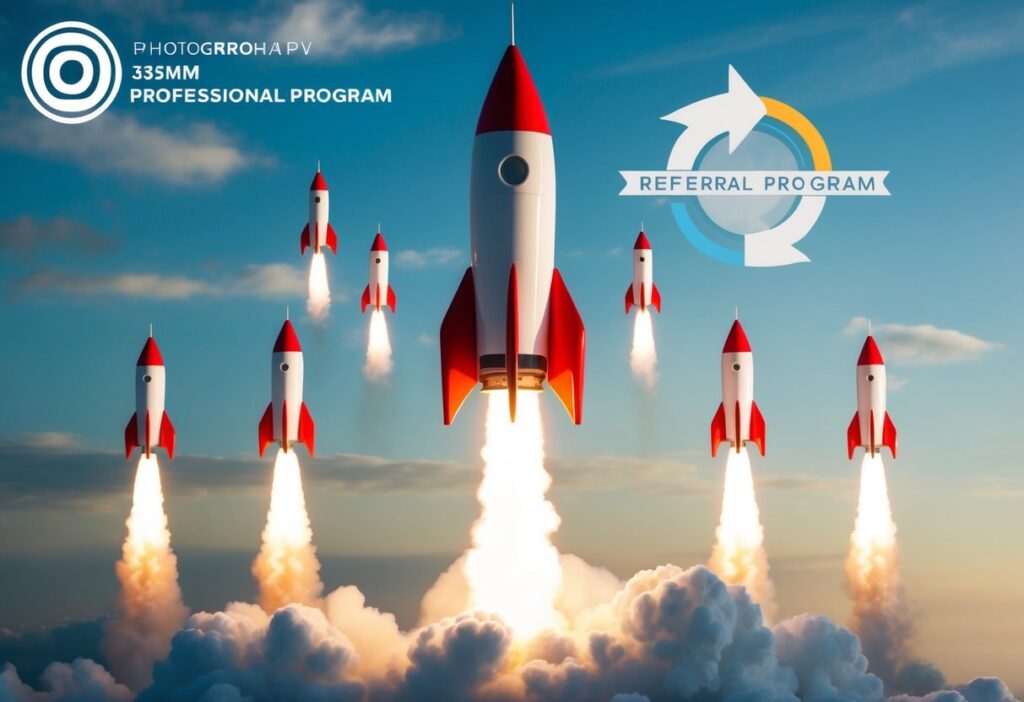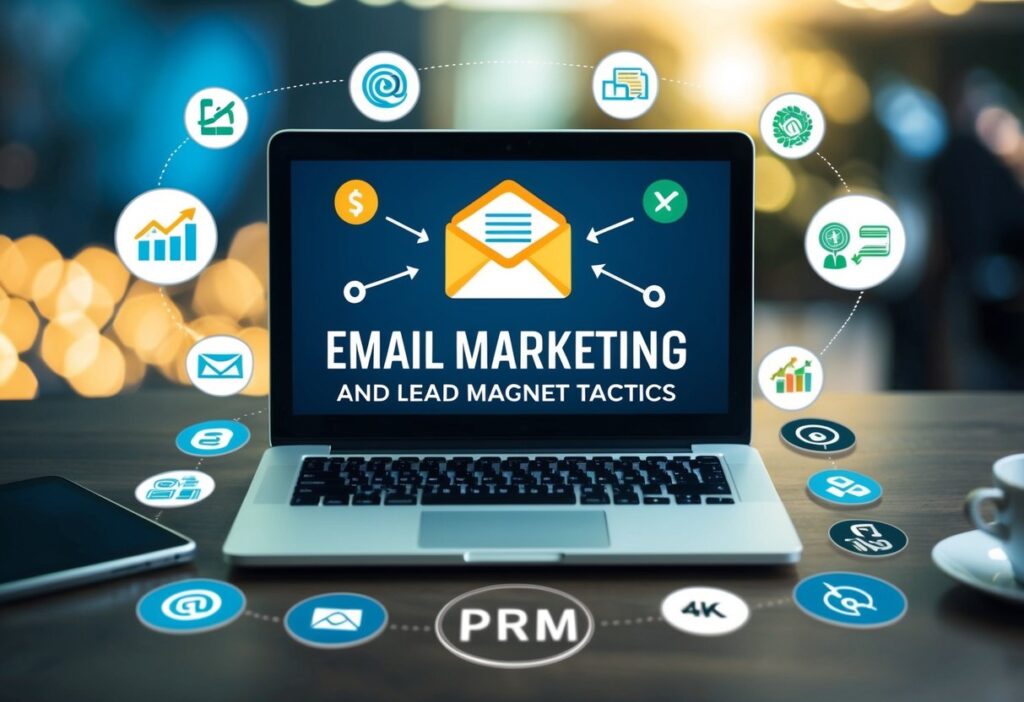Growth hacking has become a buzzword in the startup world, but its impact on business growth is undeniable. This innovative approach combines creativity, analytical thinking, and digital marketing strategies to rapidly scale companies. Growth hacking is not a one-size-fits-all solution, but rather a mindset that focuses on finding unique, cost-effective ways to acquire and retain customers.
Successful startups have leveraged growth hacking techniques to achieve remarkable results. For example, Dropbox skyrocketed to a $4 billion valuation by implementing clever referral programs and viral sharing features. Similarly, Spotify’s integration with Facebook created a viral loop that propelled it to the forefront of music streaming services.
Growth hackers utilize a variety of tools and strategies, including content marketing, email campaigns, and data-driven optimization. By constantly analyzing performance metrics and adapting tactics, startups can maintain agility and focus on sustainable growth.
Key Takeaways
- Growth hacking combines creativity and data-driven strategies to rapidly scale startups.
- Successful growth hackers continuously analyze and adapt their tactics based on performance metrics.
- Effective growth hacking requires a mix of digital marketing skills, analytical thinking, and a results-oriented mindset.
Defining Growth Hacking
Growth hacking combines creative marketing strategies with data-driven experimentation to rapidly scale businesses. This approach focuses on achieving maximum growth with minimal resources, leveraging technology and unconventional tactics.
Foundations of Growth Hacking
Growth hacking originated with startups seeking innovative ways to expand rapidly. Sean Ellis coined the term in 2010, emphasizing the need for marketers who prioritize growth above all else.
At its core, growth hacking relies on rapid experimentation across marketing channels and product development. It involves constantly testing new ideas and analyzing data to optimize results.
Key elements include:
- A/B testing
- Data analysis
- User feedback loops
- Product-market fit optimization
Growth hackers use these tools to identify the most effective ways to acquire and retain customers. They focus on scalable, low-cost strategies that can drive exponential growth.
Growth Hacking vs Traditional Marketing
While traditional marketing and growth hacking share the goal of increasing business, their approaches differ significantly. Traditional marketing often relies on established channels and long-term campaigns.
Growth hacking, in contrast, emphasizes:
- Speed and agility
- Low-cost, high-impact strategies
- Cross-functional collaboration
- Data-driven decision making
Growth hackers often work across departments, blending marketing, product development, and engineering. They seek creative solutions that can be quickly implemented and measured.
Traditional marketers might focus on brand awareness or market share. Growth hackers prioritize metrics directly tied to rapid growth, such as user acquisition and activation rates.
The Growth Hacker’s Toolbox

Growth hackers rely on a diverse set of tools and techniques to drive rapid expansion. These tools enable data-driven decision making and empower marketers to optimize their efforts for maximum impact.
Essential Tools for Growth
Growth hackers leverage various platforms to streamline their work and enhance productivity. A/B testing tools are crucial for optimizing user experiences and conversion rates. Popular options include Optimizely and VWO.
Email marketing platforms like Mailchimp or SendGrid help automate and personalize outreach efforts. Social media management tools such as Hootsuite or Buffer allow for efficient content scheduling and audience engagement.
Customer relationship management (CRM) systems like HubSpot or Salesforce enable better lead tracking and nurturing. Project management tools like Trello or Asana help teams collaborate effectively on growth initiatives.
Leveraging Analytics and Data
Data analytics forms the backbone of effective growth hacking strategies. Google Analytics provides comprehensive insights into website traffic and user behavior. Heat mapping tools like Hotjar reveal how users interact with web pages.
User acquisition and retention metrics are critical for measuring success. Tools like Mixpanel or Amplitude offer in-depth user behavior analysis.
Predictive analytics tools help forecast trends and identify potential opportunities. Machine learning algorithms can be employed to personalize user experiences and optimize marketing campaigns.
Data visualization tools like Tableau or Google Data Studio help present complex data in easily digestible formats. This enables growth hackers to communicate insights effectively and make data-driven decisions.
Content Marketing Mastery
Content marketing fuels growth hacking efforts by attracting and engaging target audiences. Effective strategies combine compelling content creation with search engine optimization to maximize reach and impact.
Crafting Compelling Content
Compelling content starts with understanding the audience. Businesses should create buyer personas to identify their ideal customers’ needs and pain points. This insight guides content creation that resonates.
Variety is key. Mix blog posts, videos, infographics, and podcasts to cater to different preferences. Focus on providing value through educational, entertaining, or inspirational content.
Use storytelling techniques to make content more engaging and memorable. Incorporate real-world examples, case studies, and data to build credibility.
Encourage social sharing by including easy-to-use share buttons and creating content that sparks conversations.
Blogs and SEO Optimization
Blogs serve as a content marketing cornerstone. They provide a platform for regular, in-depth content that can boost search engine rankings.
Conduct keyword research to identify relevant terms your audience is searching for. Incorporate these naturally into blog posts, titles, and meta descriptions.
Optimize blog structure with clear headings, short paragraphs, and bullet points for better readability. This also helps search engines understand content hierarchy.
Include internal links to other relevant content on your site. This improves navigation and keeps visitors engaged longer.
Create high-quality backlinks by guest posting on reputable sites in your industry. This increases your domain authority and improves search rankings.
Regularly update older blog posts with fresh information to maintain relevance and improve SEO performance.
Acquisition Strategies
Effective acquisition strategies are crucial for startups to attract and convert potential customers. These tactics focus on identifying ideal users and leveraging digital platforms to reach them efficiently.
Finding and Targeting the Right Audience
Startups must identify their target audience with precision to maximize acquisition efforts. Begin by creating detailed buyer personas that outline demographics, interests, and pain points. Utilize data analytics tools to gather insights on user behavior and preferences.
Implement A/B testing to refine messaging and offerings. This approach helps determine which elements resonate best with the target audience. Personalize marketing campaigns based on user segments to increase relevance and engagement.
Consider using lookalike audiences on advertising platforms to expand reach. These tools find users similar to existing customers, potentially increasing conversion rates. Tailor content to address specific audience needs and challenges, demonstrating how the product or service solves their problems.
Leveraging Social Media for Growth
Social media platforms offer powerful tools for startups to acquire users at scale. Each platform requires a tailored approach:
- Facebook: Use targeted ads and engaging content to reach specific demographics.
- Instagram: Leverage visual storytelling and influencer partnerships to build brand awareness.
- LinkedIn: Focus on B2B connections and thought leadership content to attract professional audiences.
Implement social listening tools to monitor brand mentions and industry trends. This information guides content creation and engagement strategies. Encourage user-generated content to boost credibility and expand organic reach.
Create shareable content that provides value to the target audience. This can include infographics, how-to guides, or entertaining videos that align with the brand. Utilize platform-specific features like Instagram Stories or LinkedIn Articles to diversify content formats and increase visibility.
Activation Tactics

Effective activation tactics are crucial for turning new users into engaged customers. These strategies focus on providing value quickly and guiding users to key actions that demonstrate the product’s benefits.
The Role of Onboarding in User Activation
User onboarding is a critical step in the activation process. A well-designed onboarding flow introduces new users to the product’s core features and helps them achieve their first success quickly. This initial positive experience increases the likelihood of continued engagement.
Effective onboarding often includes:
- Welcome emails with clear next steps
- Interactive product tours
- Tooltips highlighting key features
- Progress trackers to encourage completion
Personalization can significantly boost activation rates. Tailoring the onboarding experience based on user roles or goals helps users see the product’s relevance to their specific needs.
Designing for Conversion
Conversion-focused design aims to guide users towards taking desired actions. This approach applies to both landing pages and the product interface itself. Key elements include:
- Clear, compelling calls-to-action (CTAs)
- Streamlined user flows with minimal friction
- Social proof elements like testimonials or user counts
- Benefit-oriented messaging that highlights value
A/B testing is essential for optimizing conversion rates. By systematically testing different design elements, copy, and user flows, companies can identify the most effective combinations for driving activation.
Mobile optimization is increasingly important, as many users first interact with products on smartphones. Ensuring a smooth mobile experience can significantly impact activation rates across all platforms.
Retention Techniques
Keeping customers engaged and reducing churn are crucial for sustainable growth. Effective retention strategies focus on post-acquisition engagement and leveraging customer feedback to improve the product or service.
Engaging Customers Post-Acquisition
Growth hacking emphasizes retaining users after initial acquisition. Regular communication is key to keeping customers engaged. Personalized emails, push notifications, and in-app messages can remind users of the product’s value.
Gamification elements like progress bars, badges, and rewards encourage continued usage. Offering exclusive content or features to loyal customers can increase their sense of value.
Onboarding processes should be streamlined to quickly demonstrate the product’s benefits. Providing tutorials, webinars, or knowledge bases helps users maximize the product’s potential.
Creating a community around the product fosters user engagement. Forums, social media groups, or user meetups allow customers to connect and share experiences.
Reducing Churn with Customer Feedback
User feedback is invaluable for identifying and addressing pain points that lead to churn. Regular surveys, user interviews, and analysis of support tickets can uncover areas for improvement.
Implementing a Net Promoter Score (NPS) system helps track customer satisfaction over time. Negative feedback should be addressed promptly, demonstrating responsiveness to customer concerns.
Feature requests and usage data can guide product development. Prioritizing high-impact improvements based on user needs increases product stickiness.
Proactive customer support, such as reaching out to inactive users or those experiencing issues, can prevent churn before it happens. Offering personalized solutions or incentives to at-risk customers can reignite their interest in the product.
Implementing Effective Referral Programs

Referral programs harness the power of satisfied customers to drive growth. These programs incentivize existing users to recommend products or services to their networks, creating a viral loop of acquisitions.
Case Studies: Dropbox and Airbnb
Dropbox’s referral program revolutionized user acquisition in tech startups. The company offered extra storage space to users who invited friends, turning customers into brand advocates. This strategy led to a 3900% growth in just 15 months.
Airbnb’s referral system also proved highly effective. They implemented a two-sided reward system, giving both the referrer and the referred user travel credits. This approach resulted in a 300% increase in bookings and signups.
Both cases demonstrate the power of well-designed referral programs. They highlight the importance of offering valuable incentives and making the referral process simple and intuitive.
Developing a Referral Marketing System
Creating an effective referral marketing system requires careful planning and execution. The first step is defining clear goals for the program, such as increasing user base or boosting sales.
Next, businesses must choose appropriate incentives. These can be monetary rewards, product discounts, or exclusive features. The key is to ensure the reward aligns with the company’s offerings and target audience preferences.
Implementing user-friendly referral tools is crucial. This includes easy-to-share referral links, social media integration, and clear tracking mechanisms. Companies should also consider using referral software to automate and optimize the process.
Regular analysis and optimization are essential. Tracking metrics like referral rate, conversion rate, and customer lifetime value helps refine the program over time.
Email Marketing and Lead Magnets

Email marketing and lead magnets are powerful tools for attracting and retaining customers. They work in tandem to build relationships and drive conversions.
Building a Powerful Email List
Email list growth is crucial for effective marketing. Startups should focus on creating high-quality content that provides value to their target audience.
Offering lead magnets such as e-books, whitepapers, or industry reports in exchange for email addresses can significantly boost list growth. These resources should address specific pain points or interests of potential customers.
Optimizing website design for conversions is essential. Clear calls-to-action and user-friendly sign-up forms encourage visitors to join the email list.
Leveraging social media platforms to promote lead magnets can expand reach and attract new subscribers. Collaborating with influencers or running targeted ads can amplify these efforts.
Attraction with Freemium and Discounts
Freemium models offer a powerful way to attract potential customers. By providing a basic version of a product or service at no cost, startups can showcase value and entice users to upgrade.
Limited-time discounts create urgency and encourage immediate action. These can be especially effective for new product launches or during slow periods.
Exclusive offers for email subscribers foster loyalty and incentivize list sign-ups. This might include early access to new features or special pricing.
Implementing a referral program with discounts for both the referrer and new customer can accelerate growth. This tactic leverages existing customer relationships to expand the user base.
Scaling with Growth Partnerships
Growth partnerships offer startups a powerful way to expand their reach and accelerate growth. By collaborating strategically, companies can tap into new audiences, share resources, and create win-win scenarios that benefit all parties involved.
Collaborating for Mutual Benefit
Startups can forge partnerships with complementary businesses to drive growth. These collaborations often involve sharing customer bases, resources, or expertise. For example, a fitness app might partner with a nutrition company to offer bundled services.
Key benefits include:
- Expanded customer reach
- Shared marketing costs
- Access to new skills or technologies
To identify potential partners, startups should:
- Analyze their target audience
- Look for businesses serving similar demographics
- Evaluate alignment in values and goals
Successful partnerships require clear communication and defined objectives. Partners should establish metrics to measure success and regularly review progress.
Exploring Co-marketing Opportunities
Co-marketing allows startups to leverage the audiences of other brands or influencers. This strategy can significantly boost visibility and credibility. Common co-marketing tactics include:
- Joint webinars or events
- Co-branded content creation
- Cross-promotion on social media
Influencer marketing can be particularly effective for startups. By partnering with relevant influencers, companies can quickly gain trust and exposure within their target market.
When planning co-marketing initiatives, startups should:
- Ensure brand alignment
- Set clear goals and expectations
- Create a detailed content strategy
- Track and analyze results
Effective co-marketing can lead to rapid growth, increased brand awareness, and a stronger market position for startups.
Measuring Success and Driving ROI

Effective growth hacking requires precise measurement and optimization of key metrics. By tracking the right data points and continuously testing new approaches, startups can maximize their return on investment and achieve rapid, sustainable growth.
Key Metrics and KPIs for Growth
Successful growth hackers focus on metrics that directly impact business growth. Customer Acquisition Cost (CAC) measures the resources needed to gain new users. Lifetime Value (LTV) calculates the total revenue a customer generates. The LTV/CAC ratio should exceed 3:1 for a healthy business model.
User engagement metrics like Daily Active Users (DAU) and Monthly Active Users (MAU) reveal product stickiness. Retention rate tracks how many customers continue using the product over time. Churn rate measures user attrition.
Conversion rate optimizes the percentage of visitors who take desired actions. Net Promoter Score (NPS) gauges customer satisfaction and likelihood to recommend the product.
Testing Hypotheses and Iterating
Growth hackers employ a systematic approach to testing ideas and optimizing strategies. They start by forming clear hypotheses about potential growth levers. A/B testing compares two versions of a webpage, email, or feature to determine which performs better.
Analytics tools track user behavior and funnel progression. Heat maps visualize where users click and spend time on pages. Cohort analysis examines how different user groups behave over time.
Growth teams analyze test results to identify winning tactics. They quickly implement successful strategies and iterate on those that underperform. This data-driven approach allows startups to allocate resources efficiently and achieve rapid, measurable growth.
Frequently Asked Questions

Growth hacking strategies can propel startups to rapid success through innovative tactics and data-driven approaches. Effective techniques leverage social media, product features, and analytical insights to drive exponential growth.
What are the essential growth hacking strategies for startups?
Key growth hacking strategies include setting clear goals and KPIs, optimizing user acquisition channels, and implementing viral loops. Startups should focus on creating a product-market fit and leveraging customer feedback for continuous improvement.
Data analysis plays a crucial role in identifying growth opportunities. Startups must be prepared to pivot based on performance metrics and user behavior patterns.
Can you provide successful examples of growth hacking?
Dropbox’s referral program incentivized users to invite friends, resulting in exponential user growth. Airbnb integrated with Craigslist to tap into an existing user base, dramatically increasing their reach.
HubSpot created a free website grader tool, attracting potential customers and showcasing their expertise. This growth hacking tactic led to significant lead generation and brand awareness.
How does the growth hacking framework contribute to startup success?
The growth hacking framework emphasizes rapid experimentation, data analysis, and scalable tactics. It allows startups to identify and exploit growth opportunities quickly, often with limited resources.
By focusing on metrics-driven decision making, startups can allocate resources more efficiently and achieve faster market penetration. The framework encourages a culture of constant innovation and adaptation.
What are some effective social media growth hacking tactics?
Leveraging user-generated content can increase engagement and reach on social platforms. Implementing viral challenges or contests can rapidly expand a startup’s audience.
Utilizing platform-specific features, such as Instagram Stories or Twitter polls, can boost visibility and interaction. Strategic hashtag usage and influencer partnerships can also amplify a startup’s social media presence.
What are the best resources to learn advanced growth hacking skills?
Online courses from platforms like Coursera or Udemy offer comprehensive growth hacking curricula. Industry blogs such as GrowthHackers.com provide up-to-date tactics and case studies.
Attending growth hacking conferences and workshops can provide networking opportunities and insights from experienced practitioners. Books like “Hacking Growth” by Sean Ellis offer in-depth strategies and frameworks.
What is the average salary for a growth hacker working at a startup?
Growth hacker salaries vary based on experience, location, and company size. Entry-level positions typically range from $50,000 to $70,000 annually.
Experienced growth hackers at well-funded startups can earn $100,000 to $150,000 or more. Some roles may include performance-based bonuses or equity compensation tied to growth metrics.


